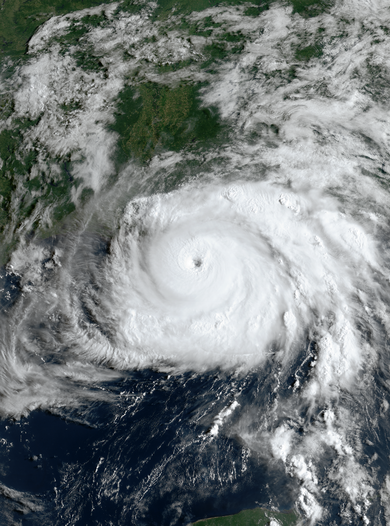Hurricane Ida Devastates Louisiana and the Northeast
Andrew J. Raccuglia
US News Writer
Hurricane Ida brought heavy rains, strong tornadoes, and major flooding across Louisiana and the Northeastern United States as it swept through the Gulf Coast and the East Coast from August 29 to September 2.
Ida made landfall near Port Fourchon, Louisiana with Category 4 winds, and was the most damaging hurricane to hit Louisiana since Hurricane Katrina in 2005, the costliest storm in the Northeast since Hurricane Sandy in 2012, and the deadliest storm in the country in four years. The storm was the sixth-costliest tropical cyclone on record, causing over $50 billion in damages to the United States. 96 deaths have been confirmed in the United States in relation to Ida, including 30 deaths in New Jersey and 18 in New York.
Outside of the post-Katrina flood protection system in southern Louisiana, levees in lower Jefferson Parish were overtopped by eight feet of water, with major insured damages in the parish estimated to be at least $15 billion. Nearly the entire city of New Orleans lost power, and significant damage in destroyed roofs and building collapses were recorded in the French Quarter. The island community of Grand Isle was deemed uninhabitable after suffering 12 breaks in its sand levee, leading to 100% of structures being damaged.

Grand Isle Police Chief Scooter Resweber said that he and other officers were waiting out the storm in the town’s police station when the destruction occurred. “Roofs started to come apart. We could see buildings flying into pieces across the street from us. It’s something that you just don’t want to ever see again,” Resweber said.
The remnants of Ida produced heavy rains and rare tornadoes in the Northeast as it crossed over the Appalachian Mountains on September 1, drenching eastern Pennsylvania, New Jersey, and New York. According to Dartmouth College researcher Evan Dethier, seven rivers in the Northeast reached their highest levels on record, including the Schuylkill River. Most of the deaths in the Northeast were caused by flash floods, including those of Seton Hall University freshman Nidhi Rana and Montclair State University student Ayush Rana, who was swept away by the floodwaters in Passaic, New Jersey. The heavy rains that pounded the region resulted in the National Weather Service’s first-ever flash flood emergency in New York City.
At least seven tornadoes were confirmed to spawn from Ida, a rarity in the northeastern region, including one that touched down in Princeton, New Jersey, and another that destroyed multiple homes in Mullica Hills, New Jersey. At least 81,740 power outages were reported in New Jersey on September 1, and most of the New York City Subway and surrounding commuter rail systems were shut down due to the extreme floods.
When President Biden visited New York and New Jersey on September 7 to survey the damages, he warned that climate change is here, and that action must be immediate in order to prevent worse disasters. “Every part of the country is getting hit by extreme weather,” Biden said. “And we’re now living in real-time what the country’s going to look like. We can’t turn it back very much, but we can prevent it from getting worse.”
Biden and other public officials, including New York Gov. Kathy Hochul and New York City Mayor Bill de Blasio, are turning regional attention to improving stormwater systems that are unprepared to handle a future of more frequent flash flooding, a future that climate change will guarantee.
Contact Andrew at andrew.raccuglia@student.shu.edu

